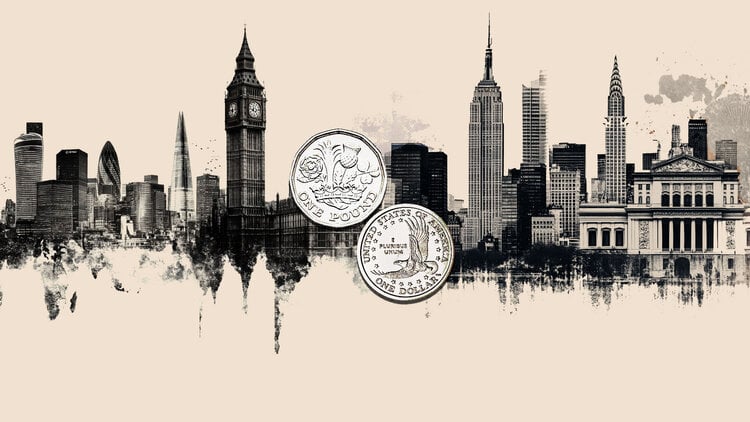- The price of Gold moves sharply higher on Tuesday and rises to two-week highs.
- Dovish expectations from the Fed, falling US bond yields and a weakening Dollar continue to offer support to the price of Gold.
- Bulls are unfazed by the positive risk tone ahead of the FOMC meeting minutes.
The price of Gold (XAU/USD) regains a strong positive tone on Tuesday and maintains its buying tone near two-week highs during the first part of the European session. The selling around the US Dollar (USD) continues on the back of dovish expectations from the Federal Reserve (Fed), which in turn is seen as a key factor acting as a tailwind for the precious metal. Disappointing US macroeconomic data eliminated any expectations of further rate hikes and instead fueled speculation about a series of interest rate cuts in 2024. This led to a further decline in US bond yields. US Treasury and provided additional support to the yellow metal, which does not offer returns.
The aforementioned supporting factors, to a greater extent, help offset a generally positive tone surrounding stock markets, which tends to undermine demand for gold, a traditional safe haven. Investors continue to cheer on the latest optimism around hopes of further stimulus measures from China to support the post-pandemic recovery. Market participants now await the release of the FOMC meeting minutes, due later during the American session, looking for significant momentum amid uncertainty over when the Fed will begin easing policy. monetary.
Daily Market Summary: Gold Price Hits New Two-Week High on Sustained USD Selling, Awaits FOMC Minutes
- The Federal Reserve’s moderate expectations have not stopped the selling of the Dollar, which has helped the price of Gold regain ground on Tuesday.
- Investors now appear convinced that the Fed has completed its cycle of interest rate hikes and are looking for clues as to when the central bank might begin to ease its monetary policy.
- The interest rate-sensitive 2-year US government bond yield remains below the current Fed funds target of 5.25% to 5.50%, suggesting momentum is building in favor of rate cuts.
- The CME’s Fedwatch tool points to a roughly 30% chance that the Fed will begin cutting rates as early as March 2024 and a cumulative easing of nearly 100 basis points by the end of the year.
- The 10-year US Treasury yield falls to two-month lows and weakens the dollar, counteracting market optimism and benefiting the underperforming yellow metal.
- Investors were optimistic after Chinese authorities pledged to roll out more policies to support the country’s beleaguered real estate sector and give a further boost to growth.
- New Chinese Finance Minister Lan Fo’an said the country would boost budget spending to support the post-pandemic recovery of the world’s second-largest economy.
- Fed officials, for their part, have not ruled out the possibility that further interest rate hikes may be necessary should a change in economic data require it.
- Richmond Fed President Thomas Barkin stated Monday that inflation is likely to remain stubborn, forcing the central bank to keep rates higher for longer than investors currently anticipate.
- This, in turn, could act as a headwind for the precious metal, as traders will look to the FOMC minutes for new clues on the Fed’s future policy action.
Technical Analysis: Gold bulls remain in control and could challenge multi-month highs again near the $2,009-$2,010 region
From a technical point of view, the continuation of buying above last week’s high, around the $1,993 area, should allow the price of Gold to recover the psychological level of $2,000. Momentum could extend further to retest a multi-month high, around the $2,009-$2,010 area touched in October. Sustained strength above the latter zone will be seen as a new trigger for the bulls and will set the stage for an extension of the recent positive rebound from levels just below the 200-day SMA.
On the other hand, the $1,978-$1,977 area seems to protect the immediate decline before the low around the $1,965 area. If these support levels are not defended, the price of Gold could accelerate the decline towards the 200-day SMA area, currently near the $1,938-$1,937 area. This is followed by the confluence of the 50-day and 100-day SMAs, around the $1,930-$1,929 area, which if broken decisively will change the short-term bias in favor of the bears and trigger some technical selling.
Frequently asked questions about Gold
Why invest in Gold?
Gold has played a fundamental role in human history, as it has been widely used as a store of value and medium of exchange. Today, aside from its brilliance and use for jewelry, the precious metal is considered a safe-haven asset, meaning it is considered a good investment in turbulent times. Gold is also considered a hedge against inflation and currency depreciation, since it does not depend on any specific issuer or government.
Who buys more Gold?
Central banks are the largest holders of Gold. In their aim to support their currencies in turbulent times, central banks tend to diversify their reserves and purchase Gold to improve the perception of strength of the economy and currency. High Gold reserves can be a source of confidence for the solvency of a country. Central banks added 1,136 tons of gold worth about $70 billion to their reserves in 2022, according to data from the World Gold Council. This is the largest annual purchase since records exist. Central banks in emerging economies such as China, India and Turkey are rapidly increasing their gold reserves.
What correlation does Gold have with other assets?
Gold has an inverse correlation with the US Dollar and US Treasuries, which are the main reserve and safe haven assets. When the Dollar depreciates, the price of Gold tends to rise, allowing investors and central banks to diversify their assets in turbulent times. Gold is also inversely correlated with risk assets. A rally in the stock market tends to weaken the price of Gold, while sell-offs in riskier markets tend to favor the precious metal.
What does the price of Gold depend on?
The price of Gold can move due to a wide range of factors. Geopolitical instability or fear of a deep recession can cause the price of Gold to rise rapidly due to its status as a safe haven asset. As a non-yielding asset, the price of Gold tends to rise when interest rates fall, while rising money prices tend to weigh down the yellow metal. Still, most of the moves depend on how the US Dollar (USD) performs, as the asset is traded in dollars (XAU/USD). A strong Dollar tends to keep the price of Gold in check, while a weaker Dollar is likely to push up Gold prices.
Source: Fx Street
I am Joshua Winder, a senior-level journalist and editor at World Stock Market. I specialize in covering news related to the stock market and economic trends. With more than 8 years of experience in this field, I have become an expert in financial reporting.







